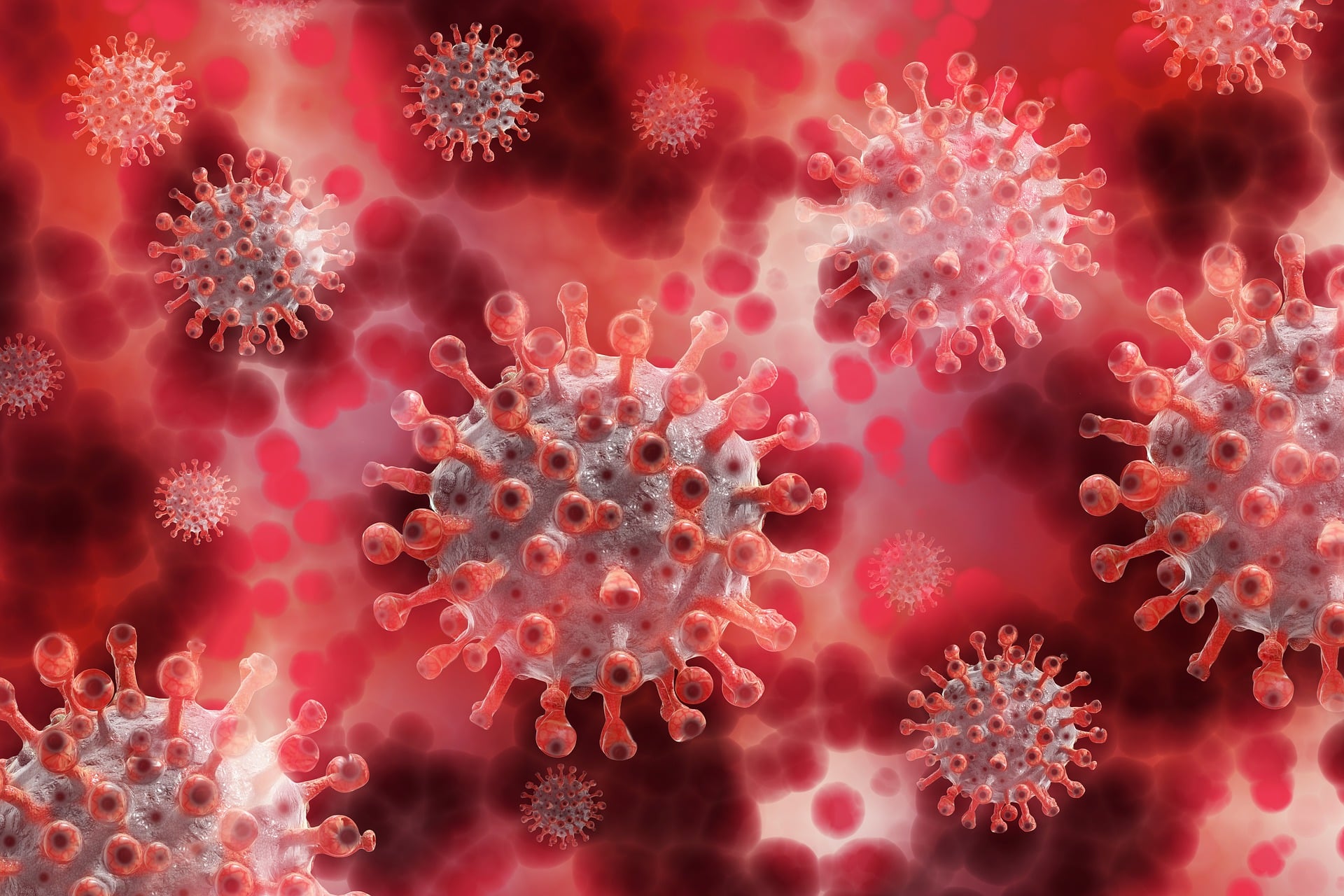COVID-19 (COronaVirus Infectious Disease 2019) is the disease caused by SARS-coV-2, a virus of the coronavirus family. The coronavirus family is known to cause symptoms ranging from a simple cold to severe respiratory complications.
The COVID-19 outbreak allegedly began in the city of Wuhan in China in December 2019, and was declared a pandemic by the World Health Organization on March 11, 2020.
Symptoms
Symptoms of COVID-19 can vary from person to person. The most common are:
- fever;
- in children: 38°C (100.4°F) and above (rectal temperature),
- in adults: 38°C (100.4°F) and above (oral temperature),
- in seniors: 37.8°C (100°F) and above (oral temperature),
- or 1.1°C higher than a person’s normal value;
- onset or worsening of a cough;
- difficulty breathing;
or
- sudden loss of smell without nasal congestion, with or without loss of taste.
Symptoms can take up to 14 days to appear. They can be mild and similar to those of the common cold. They can also be more severe, such as those associated with pneumonia and lung failure. It is also possible to be a carrier of COVID-19 without showing symptoms. For these reasons, it is essential apply all preventive measures.
Mode of transmission
COVID-19 is spread through small, contaminated droplets that spray out of the mouth or nose of infected people when they talk, cough or sneeze. These droplets spread through the air and can be inhaled by people who are too close.
In addition, the virus can survive from a few hours to a few days on surfaces, depending on the type of surface and environment.
Thus, it is possible to contract COVID-19 by:
- Being in close proximity with an infected person;
- Touching a contaminated surface with your hands and then touching your face.
What does the situation look like in Québec and Canada?
To monitor the situation on a day-to-day basis:
Who is at risk and what about people living with diabetes?
People considered at risk are the immunocompromised, people aged 70 and over, and people living with a long-standing medical condition, such as cancer, chronic lung disease or diabetes.
For more details on the specific risks for people with diabetes, read our article COVID-19: Risks for people living with diabetes.
Treatment
To date, there is no specific cure for COVID-19. The majority of people (about 80%) have mild symptoms and will recover on their own without special treatment.
What are the preventive measures?
Since there is no vaccine available at this time, preventive measures should be followed rigorously to minimize the risk of infection and spread. These recommendations are doubly important for people considered at risk, as well as for their family:
- Wash hands often and thoroughly, for at least 20 seconds, with soap and water.
- If coughing or sneezing, cover your mouth and nose with a tissue, or if applicable, with the crease of your elbow. Discard the tissue as soon as possible and wash your hands afterwards.
- Avoid touching your face (especially your eyes, nose and mouth) before washing and drying your hands.
- Regularly clean frequently touched surfaces and appliances (e.g., door handles, countertops, mobile electronics).
- Do not share food, glasses, towels, tools, etc.
- Maintain a distance of at least 2 metres (6 feet) from other people, and avoid contact with anyone who coughs, sneezes or has a fever.
- Wear a mask in public places, especially when physical distancing of 2 metres is not possible. For information on wearing a mask, click here.
- Continue with your medical follow-up appointments as planned but inquire if it is possible to do the follow-ups remotely or to postpone them if there is no emergency. Being in a clinic increases the risk of infection.
It is also recommended to follow the measures below to prepare for an infection:
- Have the phone number of your doctor, pharmacist and insurance company.
- Have a list of your medications, as well as vitamins, minerals and supplements.
- Make sure you have enough medication to last you for at least 1 to 2 weeks in case it becomes impossible for you to leave your home.
- If possible, stock up on hand soap and hand sanitizer for cleaning your hands.
What to do in case of infection?
If you think you may be infected, please stay home and contact the Quebec government helpline at 1-877-644-4545 to find out what to do.
Also consult your doctor or pharmacist by phone to find out if an adjustment to your medication is necessary and if certain medications should be stopped temporarily.
Resources
COVID-19 is a new disease caused by a coronavirus. To date, the situation is not perfectly clear and we invite you to stay informed of the latest developments. Check out the resources below or other reliable sources of information for regular updates and recommendations.
Download – What You Need to Know About COVID-19 and Diabetes
Official website of the Government of Québec
Government of Quebec’s Self-Care Guide
Government of Canada’s official website
CNESST – Questions and answers for employees and employers
International Diabetes Federation website

